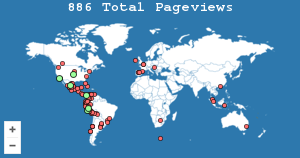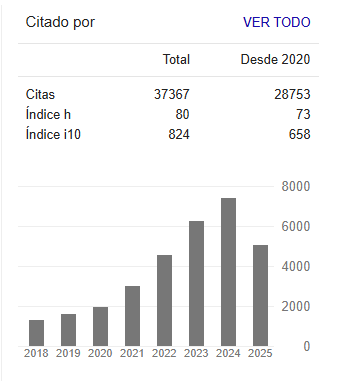Violencia doméstica y cultura: reconocimiento de los derechos para garantizar el desarrollo social
Resumen
La violencia doméstica durante muchos años se justificó desde la perspectiva de la cultura, es decir, en diferentes sociedades se permitió la agresión hacia la mujer, a quien se le vulneró en sus derechos y no se le consideró como víctima porque los actos de violencia se normalizaron. El objetivo de investigación fue evaluar la producción científica sobre la violencia doméstica y la cultura, lo cual se realizó en las bases de datos más representativas Scopus y Web of Science. Se utilizó el método de revisión documental a partir de la búsqueda de los términos: violencia doméstica y cultura. Se obtuvo como resultado que la violencia doméstica, tradicionalmente, se justifica por la imposición de la figura patriarcal, quien ejercía su rol desde la agresión injustificada. Asimismo, que durante mucho tiempo existió desigualdad en el ejercicio de los derechos de la mujer y se consintió la permanencia de esta injusticia en el hogar. De igual forma, existen investigaciones que no justifican la agresión contra la mujer en los tiempos actuales y precisan que todo acto de violencia doméstica debe ser sancionado. Se concluyó que es importante conocer la concepción de la violencia doméstica y la cultura para establecer la necesidad de difundir los derechos que tienen las mujeres e integrantes del hogar. En la misma línea, no existe justificación para sustentar o permitir la continuidad de la violencia doméstica, toda vez que atenta contra la dignidad humana.
Citas
Albert, I., & Coimbra, S. (2017). Family Cultures in The Context of Migration and Ageing. Integrative Psychological and Behavioral Science, 51(2), 205-222. https://doi.org/10.1007/s12124-017-9381-y
Amin, M., Islam, A., & Lopez-Claros, A. (2021). Absent laws and missing women: Can domestic violence legislation reduce female mortality? Review of Development Economics, 25(4), 2113-2132. https://doi.org/10.1111/rode.12799
Anitha, S. (2011). Legislating gender inequalities: The nature and patterns of domestic violence experienced by South Asian women with insecure immigration status in the United Kingdom. Violence Against Women, 17(10), 1260-1285. https://doi.org/10.1177/1077801211424571
Bent-Goodley, T. (2005). Culture and domestic violence: Transforming knowledge development. Journal of Interpersonal Violence, 20(2), 195-203. https://doi.org/10.1177/0886260504269050
Brown, J. (2014). Factors Related to Domestic Violence in Asia: The Conflict between Culture and Patriarchy. Journal of Human Behavior in the Social Environment, 24(7), 828-837. https://doi.org/10.1080/10911359.2014.884962
Burman, E., Smailes, S., & Chantler, K. (2004). ‘Culture’ as a barrier to service provision and delivery: Domestic violence services for minoritized women. Critical Social Policy, 24(3), 332-357. https://doi.org/10.1177/0261018304044363
Chaudhuri, S., Morash, M., & Yingling, J. (2014). Marriage Migration, Patriarchal Bargains, and Wife Abuse: A Study of South Asian Women. Violence Against Women, 20(2), 141-161. https://doi.org/10.1177/1077801214521326
Cheek, N., Bandt-Law, B., & Sinclair, S. (2023). People believe sexual harassment and domestic violence are less harmful for women in poverty. Journal of Experimental Social Psychology, 107. https://doi.org/10.1016/j.jesp.2023.104472
Chikhungu, L., Bradley, T., Jamali, M., & Mubaiwa, O. (2020). Culture and domestic violence amongst ever-married women in Malawi: An analysis of emotional, sexual, less-severe physical and severe physical violence. Journal of Biosocial Science, 53(2), 1-15. https://doi.org/10.1017/S0021932020000140
Choi, S., Lee, M., Lee, E., Park, S., & Kim, H. (2021). A Gambling Addiction Process in Adults Who Experienced Domestic Violence in Childhood. Journal of Korean Academy of Psychiatric and Mental Health Nursing, 30(2), 168-179. https://doi.org/10.12934/jkpmhn.2021.30.2.168
Demir, M., & Park, S. (2022). The Effect of COVID-19 on Domestic Violence and Assaults. Criminal Justice Review, 47(4), 445-463. https://doi.org/10.1177/07340168211061160
Donovan, R. (2011). Tough or tender: (dis)similarities in White college students’ perceptions of Black and White women. Psychology of Women Quarterly, 35(3), 458-468. https://doi.org/10.1177/0361684311406874
Erez, E. (2000). Immigration, culture conflict and domestic violence/woman battering. Crime Prevention and Community Safety, 2(1), 27-36. https://doi.org/10.1057/palgrave.cpcs.8140043
Erten, B., & Keskin, P. (2018). For better or for worse? Education and the prevalence of domestic violence in Turkey. American Economic Journal: Applied Economics, 10(1), 64-105. https://doi.org/10.1257/app.20160278
Fitzpatrick, S., & Stephens, M. (2014). Welfare Regimes, Social Values and Homelessness: Comparing Responses to Marginalised Groups in Six European Countries. Housing Studies, 29(2), 215-234. https://doi.org/10.1080/02673037.2014.848265
Francis, L., Loxton, D., & James, C. (2017). The culture of pretence: a hidden barrier to recognising, disclosing and ending domestic violence. Journal of Clinical Nursing, 26, 2202-2214. https://doi.org/10.1111/jocn.13501
Fuchsel, C., Murphy, S., & Dufresne, R. (2012). Domestic Violence, Culture, and Relationship Dynamics Among Immigrant Mexican Women. Affilia - Journal of Women and Social Work, 27(3), 263-274. https://doi.org/10.1177/0886109912452403
Ghafournia, N. (2014). Culture, domestic violence and intersectionality: Beyond the dilemma of cultural relativism and universalism. International Journal of Critical Cultural Studies, 11(2), 23-32. https://doi.org/10.18848/2327-0055/CGP/v11i02/43668
Goel, R. (2005). Sita’s trousseau: Restorative justice, domestic violence, and South Asian culture. Violence Against Women, 11(5), 639-665. https://doi.org/10.1177/1077801205274522
Gonzalez-Guarda, R., Cummings, A., Becerra, M., Fernandez, M., & Mesa, I. (2013). Needs and preferences for the prevention of intimate partner violence among hispanics: A community’s perspective. Journal of Primary Prevention, 34(4), 221-235. https://doi.org/10.1007/s10935-013-0312-5
Goodley, D., & Runswick-Cole, K. (2011). The violence of disablism. Sociology of Health and Illness, 33(4), 602-617. https://doi.org/10.1111/j.1467-9566.2010.01302.x
Gönsch, I., Liersch, A., & Merkel, N. (2018). Education in culture and arts: How much time do families invest? Zeitschrift fur Familienforschung, 30(1), 76-95. https://doi.org/10.3224/zff.v30i1.05
Gulbas, L., & Zayas, L. (2015). Examining the interplay among family, culture, and Latina teen suicidal behavior. Qualitative Health Research, 25(5), 689-699. https://doi.org/10.1177/1049732314553598
Hao, L. (2022). The power of family: The impact of family culture on marriage stability in China. Chinese Journal of Sociology, 8(1), 79-103. https://doi.org/10.1177/2057150X211067297
Hearn, J., & Mckie, L. (2010). Gendered and social hierarchies in problem representation and policy processes: “Domestic violence” in Finland and Scotland. Violence Against Women, 16(2), 136-158. https://doi.org/10.1177/1077801209355185
Hester, M. (2011). The three planet model: Towards an understanding of contradictions in approaches to women and childrens safety in contexts of domestic violence. British Journal of Social Work, 41(5), 837-853. https://doi.org/10.1093/bjsw/bcr095
Horn, R. (2010). Exploring the impact of displacement and encampment on domestic violence in Kakuma refugee camp. Journal of Refugee Studies, 23(3), 356-376. https://doi.org/10.1093/jrs/feq020
James, K. (201O). Domestic violence within refugee families: Intersecting patriarchal culture and the refugee experience. Australian and New Zealand Journal of Family Therapy, 31(3), 275-284. https://doi.org/10.1375/anft.31.3.275
Kamanová, L. (2017). Mothers as agents of family sexual culture. Studia Paedagogica, 22(1), 67-86. https://doi.org/10.5817/SP2017-1-5
Karimyan, A., Pourreza, A., Sadeghi, R., Sighaldeh, S., & Yaseri, M. (2022). Comparison of associated factors of domestic violence against women by their husbands based on demographic characteristics and life skills in Iran. Journal of Education and Health Promotion, 11. https://doi.org/10.4103/jehp.jehp_1417_21
Klingspohn, D. (2018). The importance of culture in addressing domestic violence for First Nation’s women. Frontiers in Psychology, 9, 1-7. https://doi.org/10.3389/fpsyg.2018.00872
Kulwicki, A., Aswad, B., Carmona, T., & Ballout, S. (2010). Barriers in the Utilization of Domestic Violence Services Among Arab Immigrant Women: Perceptions of Professionals, Service Providers & Community Leaders. Journal of Family Violence, 25(8), 727-735. https://doi.org/10.1007/s10896-010-9330-8
Lai, N-H. (2011). Expressive Arts Therapy for Mother-Child Relationship (EAT-MCR): A novel model for domestic violence survivors in Chinese culture. Arts in Psychotherapy, 38(5), 305-311. https://doi.org/10.1016/j.aip.2011.08.001
Li, G., Wu, Y., Wen, H., Zhang, F., & Yan, D. (2022). Influence of Intellectual-cultural Orientation as Family Culture on Chinese College Students’ Subjective Well-being: A Moderation Model. Inquiry (United States), 59, 1-9. https://doi.org/10.1177/00469580221103924
Lloyd, M. (2018). Domestic violence and education: Examining the impact of domestic violence on young children, children, and young people and the potential role of schools. Frontiers in Psychology, 9, 1-11. https://doi.org/10.3389/fpsyg.2018.02094
Maguire, S., & Pentaraki, M. (2023). Barriers to domestic violence education in Northern Ireland: Pupils’ views and experiences. British Educational Research Journal, 49(3), 593-612. https://doi.org/10.1002/berj.3858
Malik, N., & Lindahl, K. (1998). Aggression and dominance: The roles of power and culture in domestic violence. Clinical Psychology: Science and Practice, 5(4), 409-423. https://doi.org/10.1111/j.1468-2850.1998.tb00164.x
Maturi, J., & Munro, J. (2023). How the ‘Culture’ in ‘Culturally and Linguistically Diverse’ Inhibits Intersectionality in Australia: A Study of Domestic Violence Policy and Services. Journal of Intercultural Studies, 44(2), 143-159. https://doi.org/10.1080/07256868.2022.2102598
Montoya, C., & Rolandsen Agustín, L. (2013). The othering of domestic violence: The EU and cultural framings of violence against women. Social Politics, 20(4), 534-557. https://doi.org/10.1093/sp/jxt020
Mshweshwe, L. (2020). Understanding domestic violence: masculinity, culture, traditions. Heliyon, 6, 1-5. https://doi.org/10.1016/j.heliyon.2020.e05334
Neves, S., Silva, E., Topa, J., Borges, J., Pereira, A., & Silva, E. (2022). Death Threats and Attempted Femicide in the Context of Domestic Violence in Portugal. Social Sciences, 11, 1-10. https://doi.org/10.3390/socsci11080347
Nguyen, M., & Le, K. (2022). Can Legislation Reduce Domestic Violence in Developing Countries? Sustainability (Switzerland), 14, 1-15. https://doi.org/10.3390/su142013300
Nwabunike, C., & Tenkorang, E. (2017). Domestic and Marital Violence Among Three Ethnic Groups in Nigeria. Journal of Interpersonal Violence, 32(18), 2751-2776. https://doi.org/10.1177/0886260515596147
Oliver, W. (2000). Preventing domestic violence in the African American community: The rationale for popular culture interventions. Violence Against Woman, 6(5), 533-549. https://doi.org/10.1177/10778010022182010
Palmer, V. (2018). Grandparents’ contribution to a family culture of physical activity. Gerontologie et Societe, 40(2), I-XVI. https://doi.org/10.3917/gs1.156.0162
Pan, A., Daley, S., Rivera, L., Williams, K., Lingle, D., & Reznik, V. (2006). Understanding the role of culture in domestic violence: The Ahimsa Project for Safe Families. Journal of Immigrant and Minority Health, 8(1), 35-43. https://doi.org/10.1007/s10903-006-6340-y
Rapp, D., Zoch, B., Khan, M., Pollmann, T., & Krämer, A. (2012). Association between gap in spousal education and domestic violence in India and Bangladesh. BMC Public Health, 12, 1-9. https://doi.org/10.1186/1471-2458-12-467
Roychowdhury, P., & Dhamija, G. (2022). Don’t cross the line: Bounding the causal effect of hypergamy violation on domestic violence in India. Journal of the Royal Statistical Society. Series A: Statistics in Society, 185, 1952-1978. https://doi.org/10.1111/rssa.12858
Schow, D. (2006). The culture of domestic violence advocacy: Values of equality/behaviors of control. Women and Health, 43(4), 49-68. https://doi.org/10.1300/J013v43n04_04
Sen, P. (1999). Enhancing women’s choices in responding to domestic violence in calcutta: A comparison of employment and education. European Journal of Development Research, 11(2), 65-86. https://doi.org/10.1080/09578819908426739
Shalhoub-Kervorkian, N., & Daher-Nashif, S. (2013). Femicide and Colonization: Between the Politics of Exclusion and the Culture of Control. Violence Against Women, 19(3), 295-315. https://doi.org/10.1177/1077801213485548
Shiraz, M. (2016). The impact of education and occupation on domestic violence in Saudi Arabia. International Journal of Social Welfare, 25(4), 339-346. https://doi.org/10.1111/ijsw.12214
Simon-Kumar, R., Kurian, P., Young-Silcock, F., & Narasimhan, N. (2017). Mobilising culture against domestic violence in migrant and ethnic communities: practitioner perspectives from Aotearoa/New Zealand. Health and Social Care in the Community, 25(4), 1387-1395. https://doi.org/10.1111/hsc.12439
Stokoe, E., & Richardson, E. (2023). Asking for help without asking for help: How victims request and police offer assistance in cases of domestic violence when perpetrators are potentially co-present. Discourse Studies, 25(3), 383-408. https://doi.org/10.1177/14614456231157293
Tenkorang, E., Owusu, A., Yeboah, E., & Bannerman, R. (2013). Factors Influencing Domestic and Marital Violence against Women in Ghana. Journal of Family Violence, 28(8), 771-781. https://doi.org/10.1007/s10896-013-9543-8
Thomas, E. (2000). Domestic violence in the African-American and Asian-American communities: A comparative analysis of two racial/ethnic minority cultures and implications for mental health service provision for women of color. Psychology and Education, 37(3-4), 32-43.
Truong, M., Sharif, M., Olsen, A., Pasalich, D., Calabria, B., & Priest, N. (2022). Attitudes and beliefs about family and domestic violence in faith-based communities: An exploratory qualitative study. Australian Journal of Social Issues, 57(4), 880-897. https://doi.org/10.1002/ajs4.210
Wendt, S. (2009). Constructions of local culture and impacts on domestic violence in an Australian rural community. Journal of Rural Studies, 25(2), 175-184. https://doi.org/10.1016/j.jrurstud.2008.11.001
Yoshioka, M., & Choi, D. (2005). Culture and interpersonal violence research paradigm shift to create a full continuum of domestic violence services. Journal of Interpersonal Violence, 20(4), 513-519. https://doi.org/10.1177/0886260504267758

Esta obra está bajo licencia internacional Creative Commons Reconocimiento-NoComercial-CompartirIgual 4.0.








.png)






























